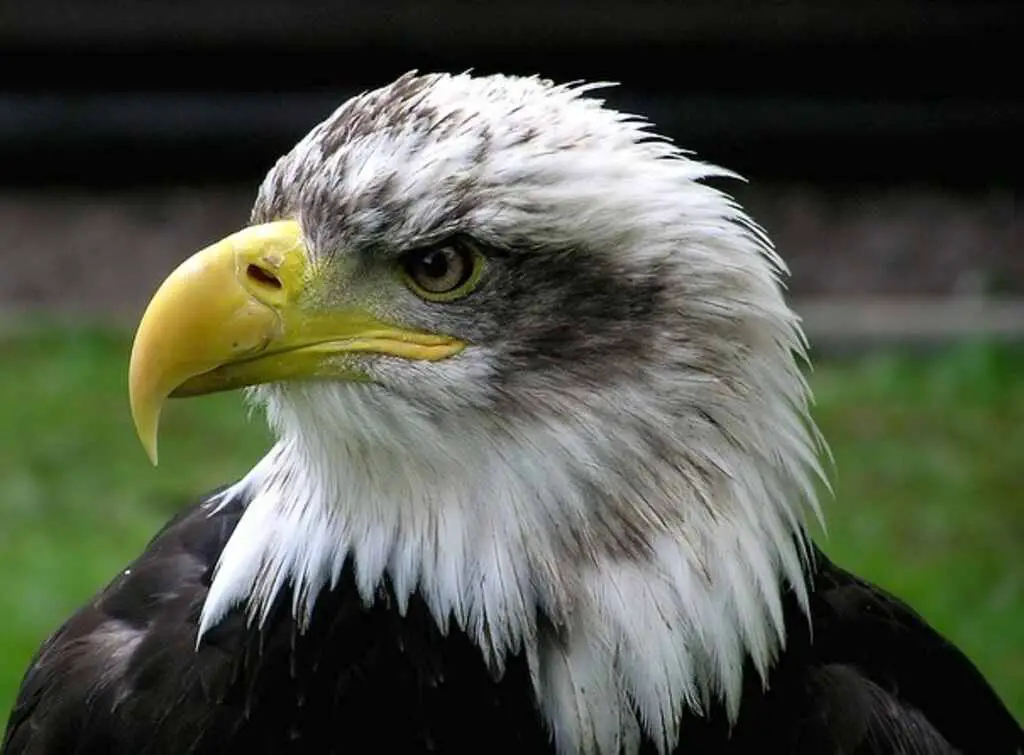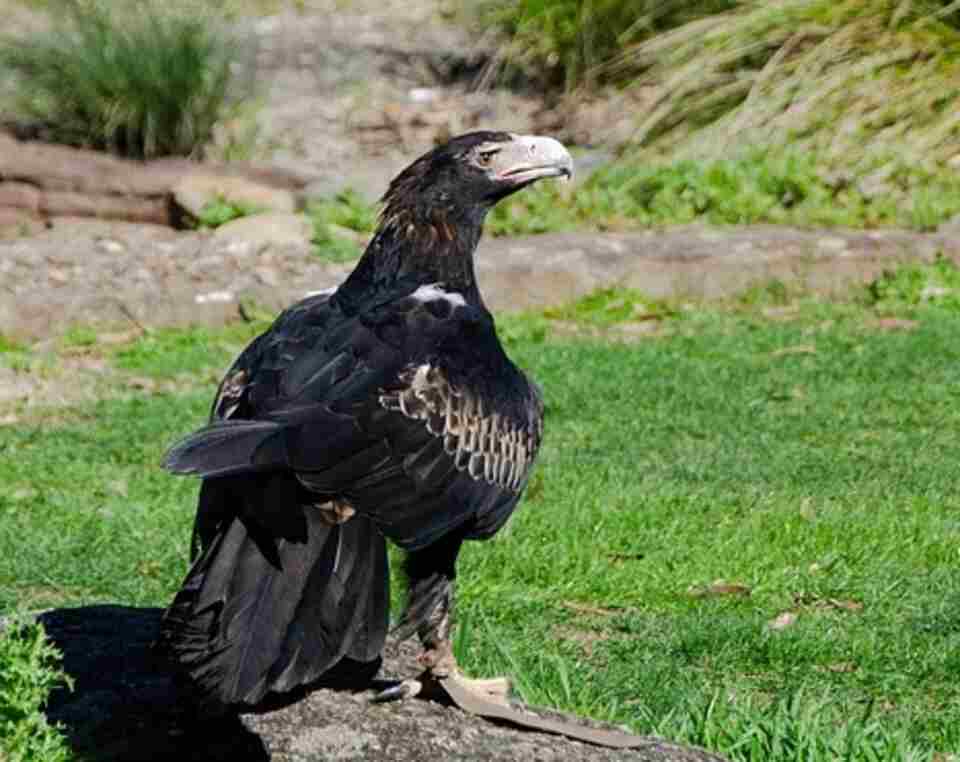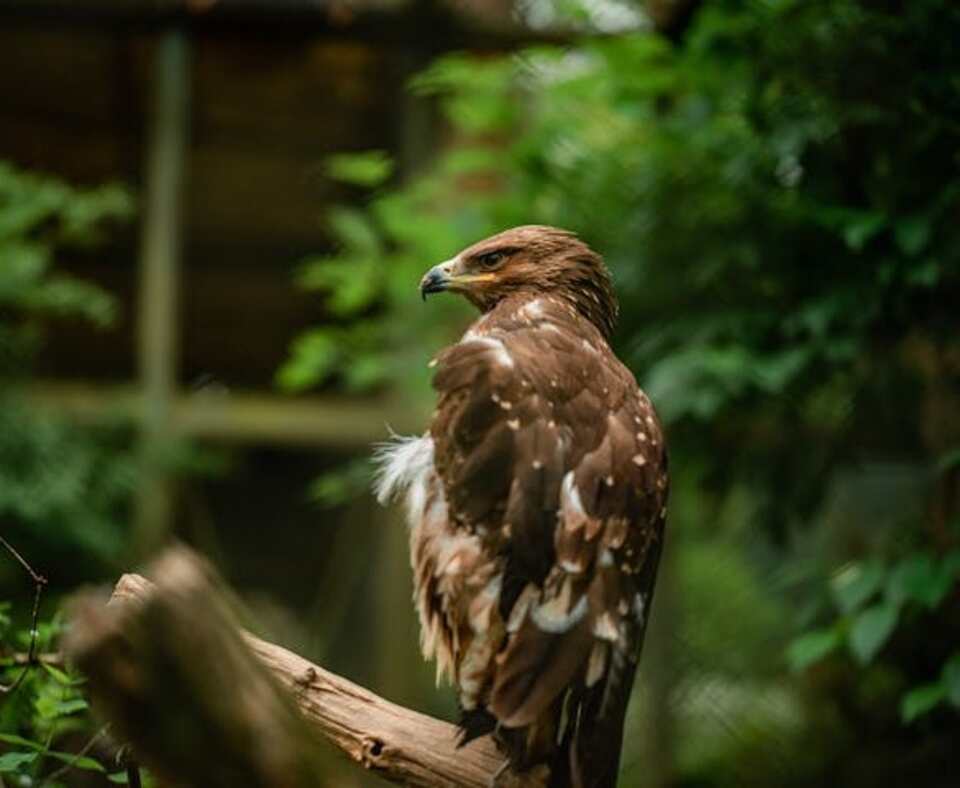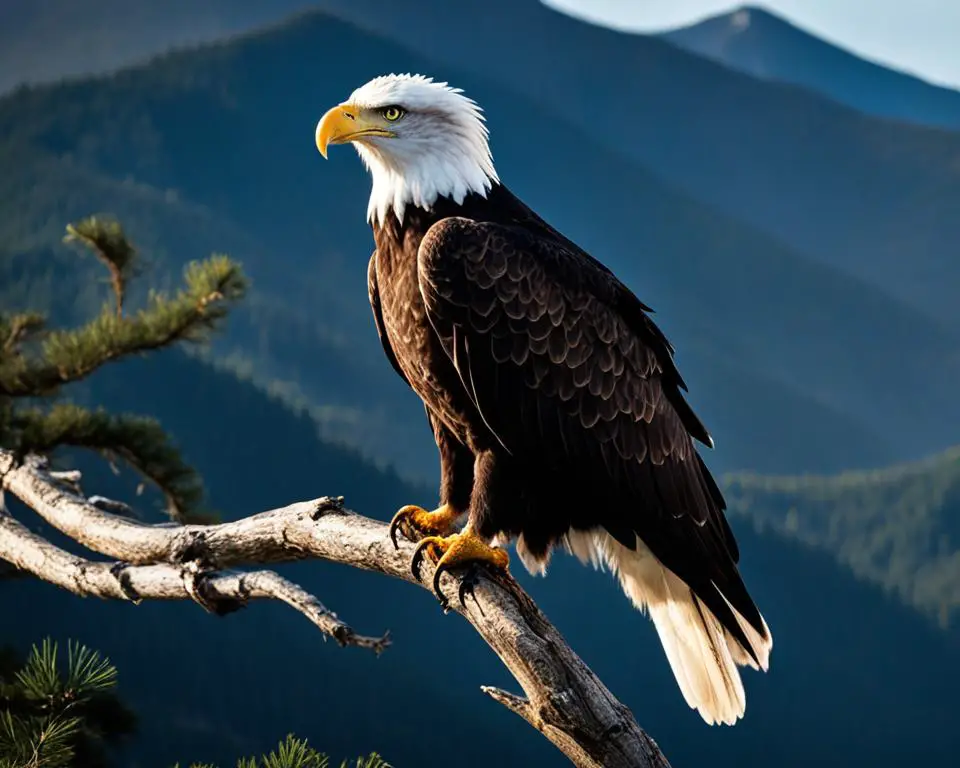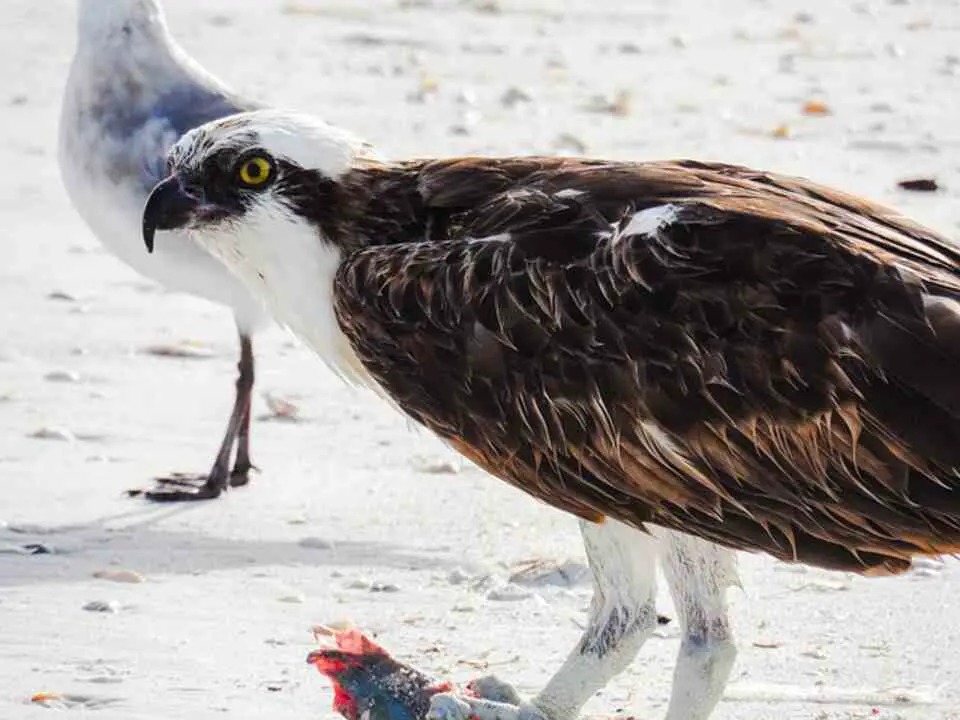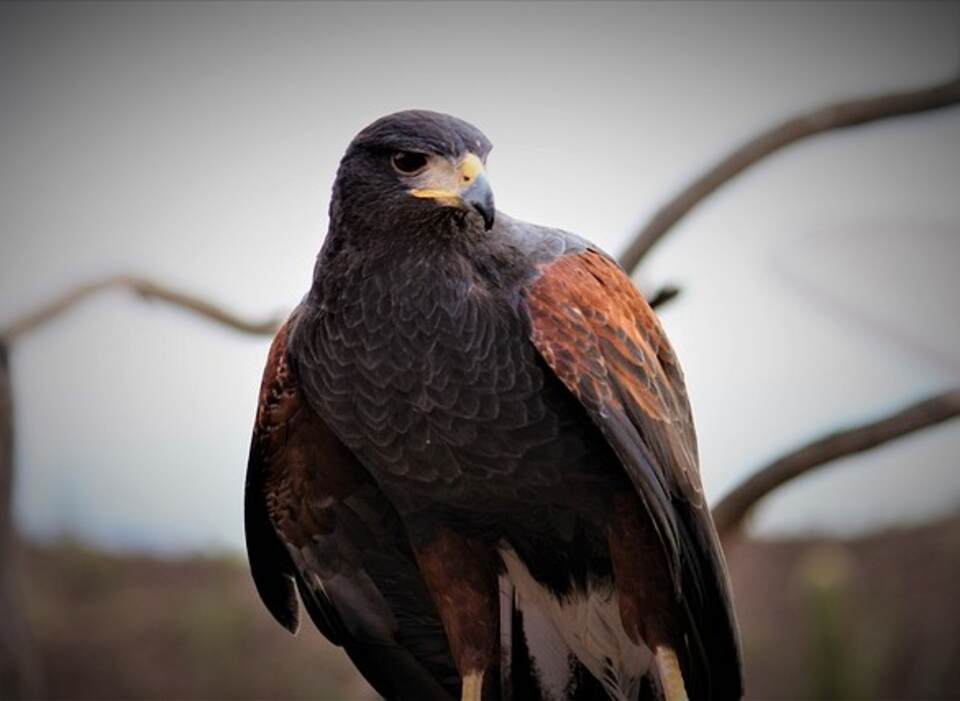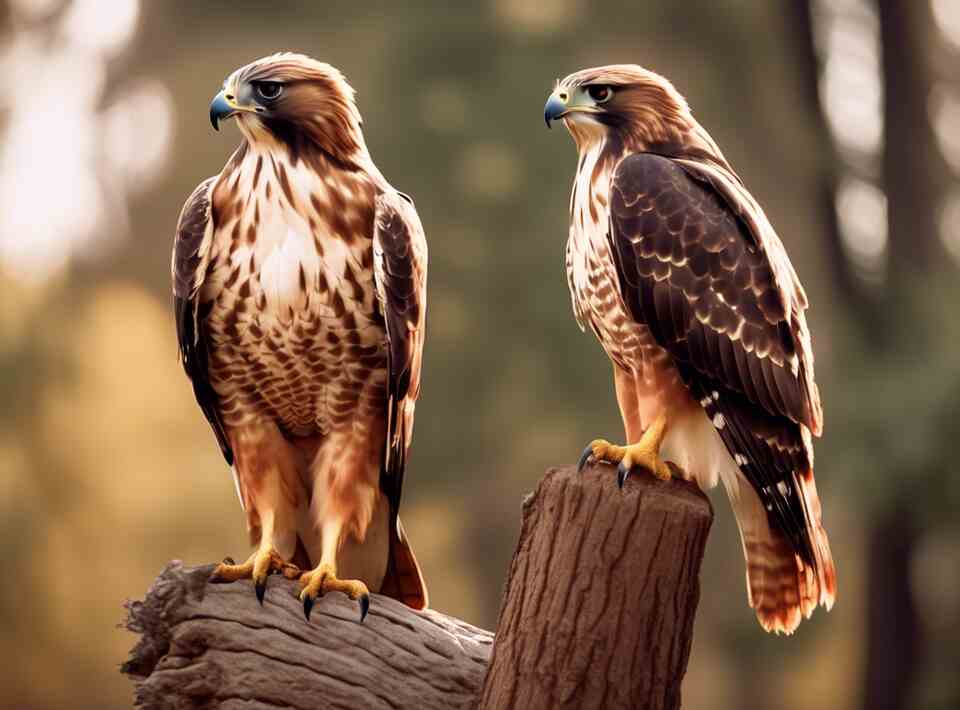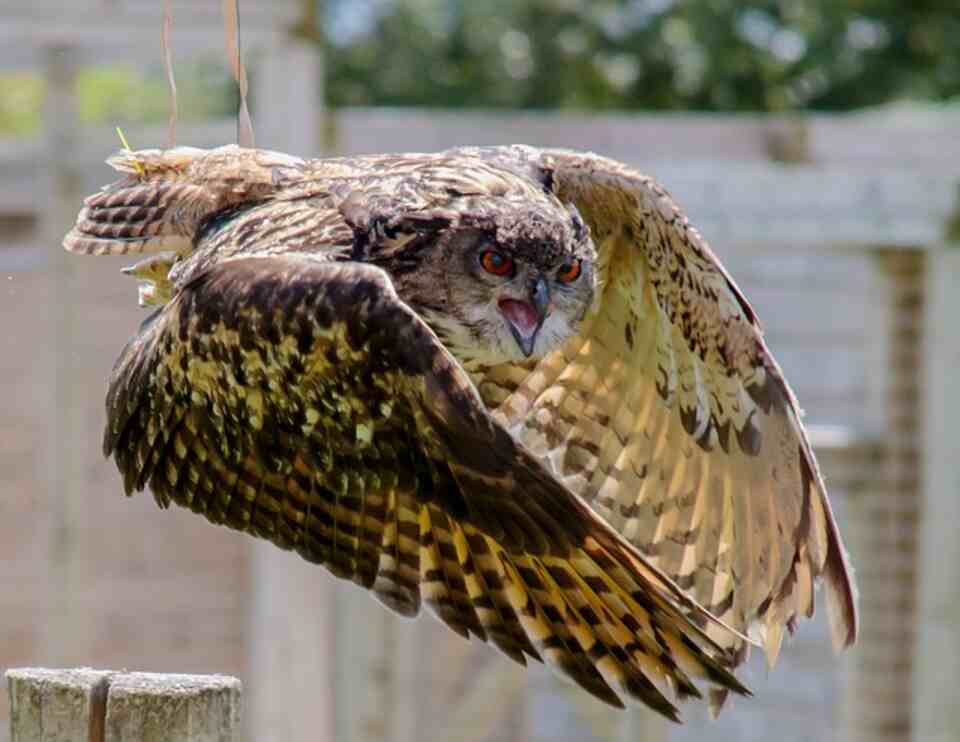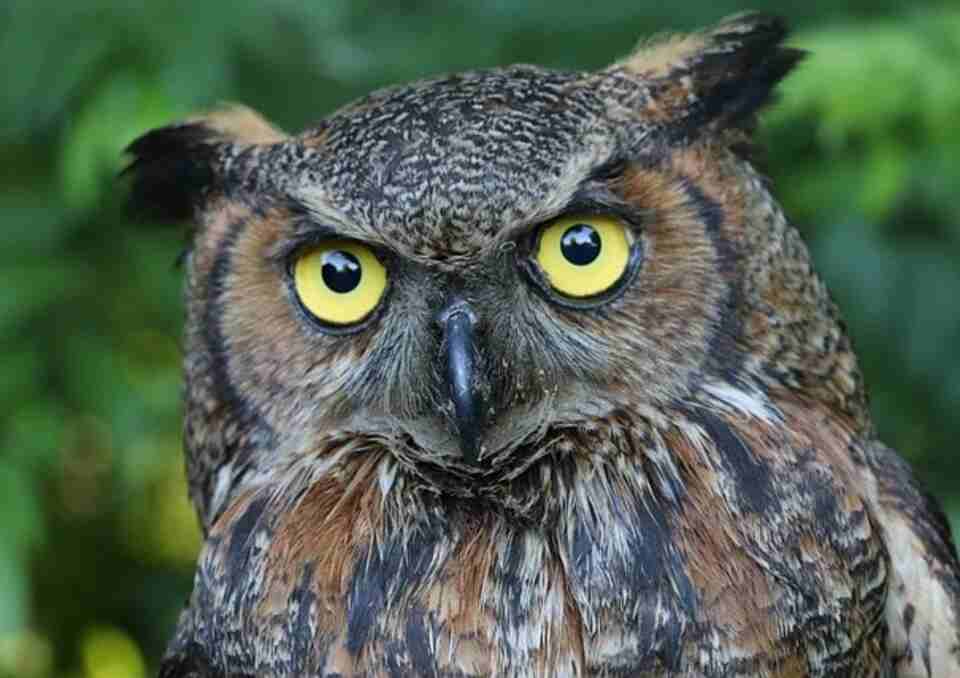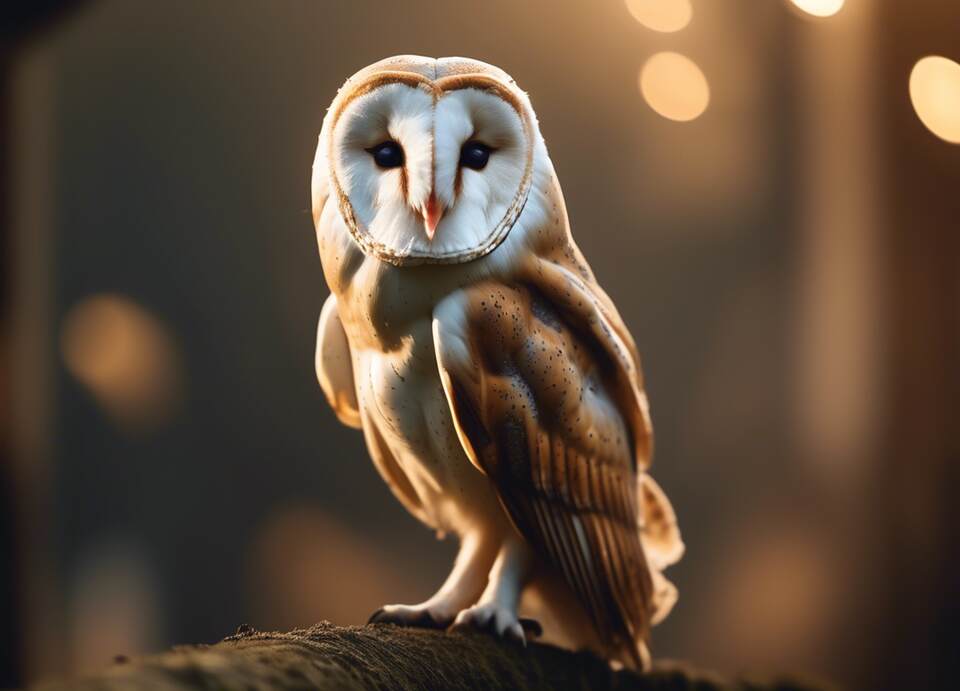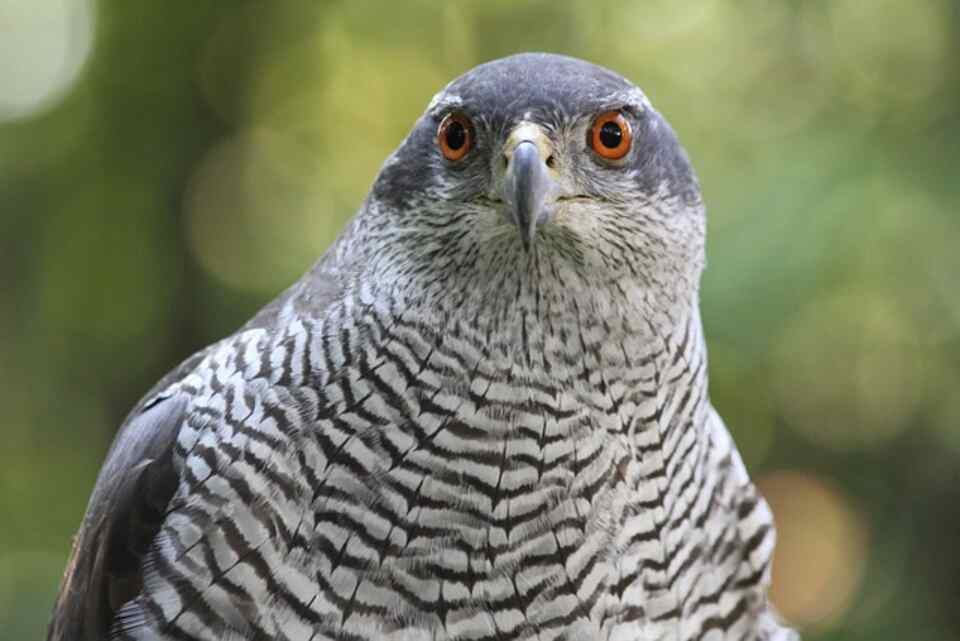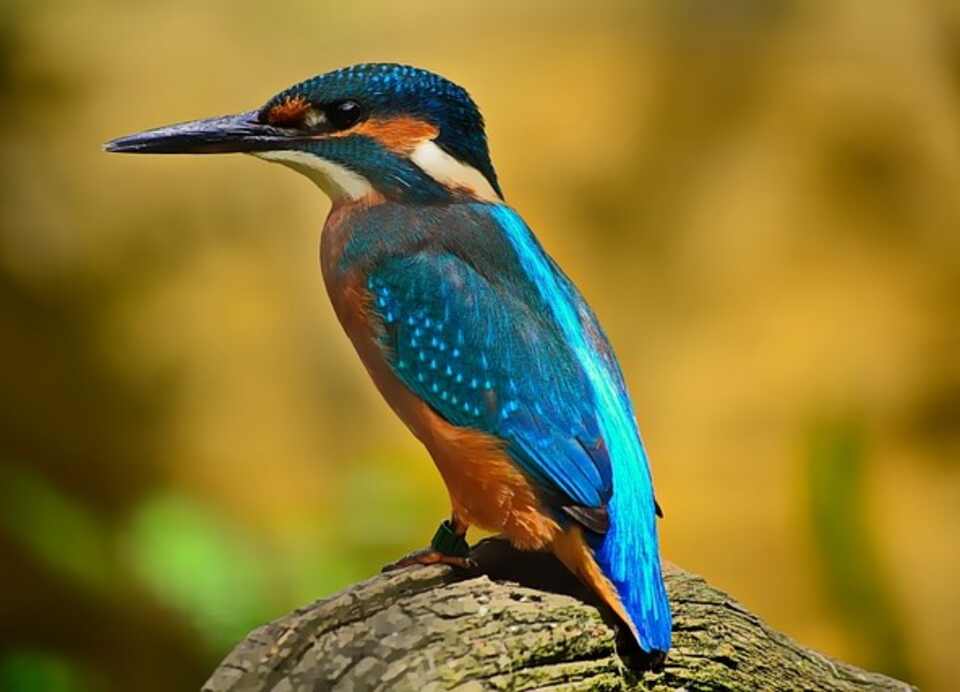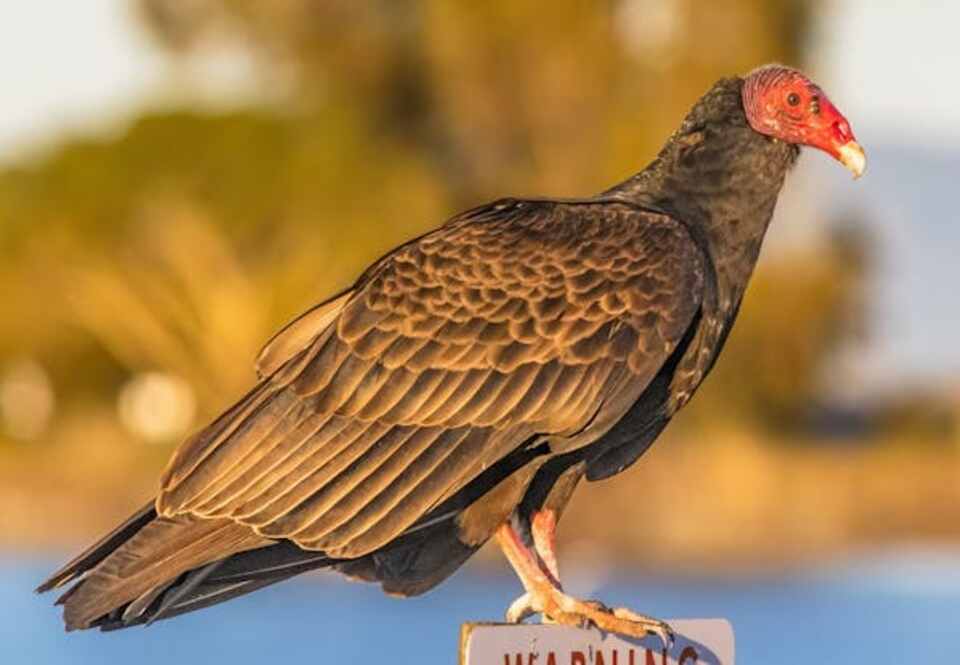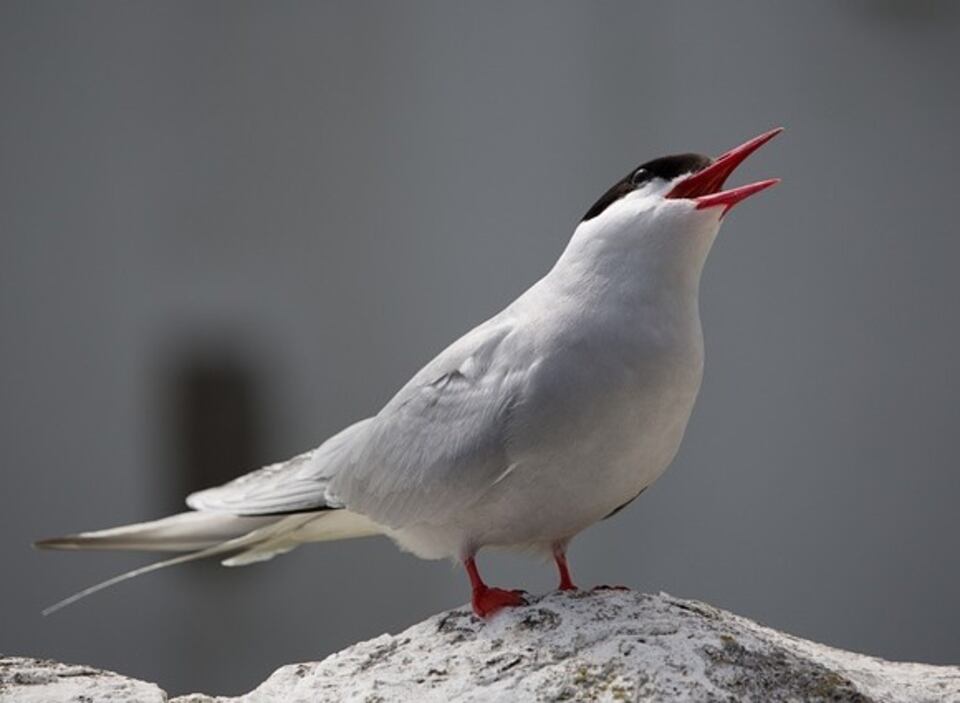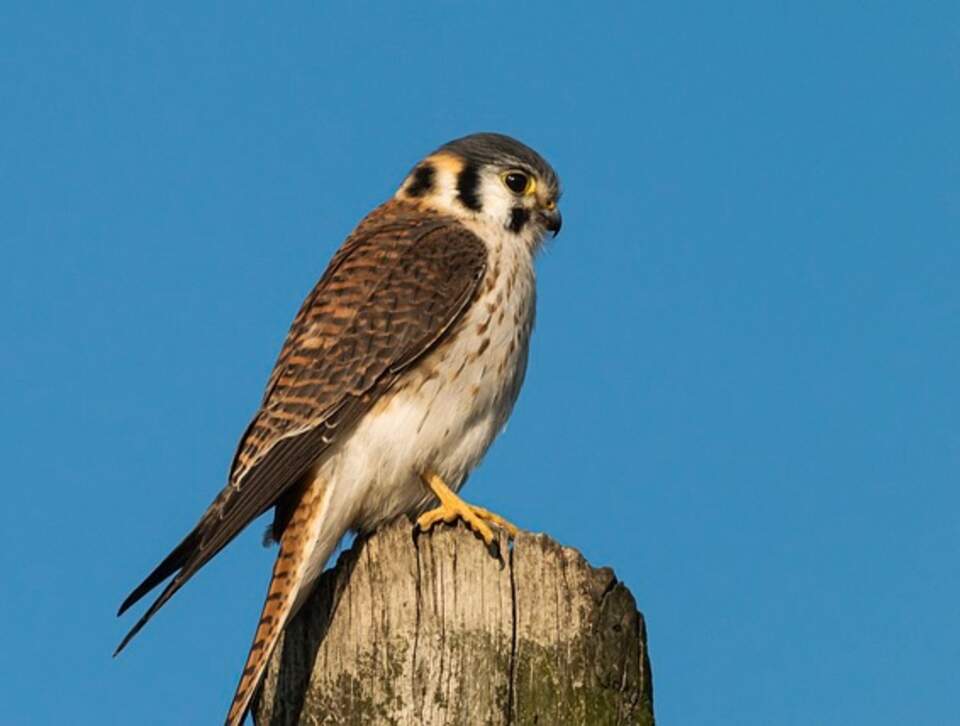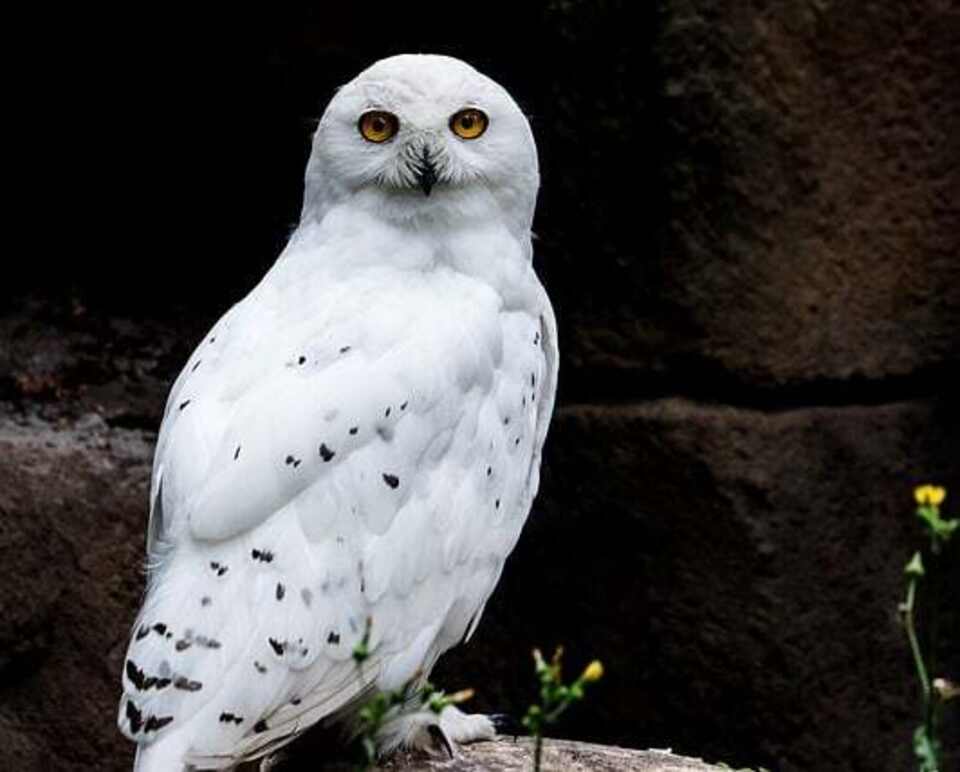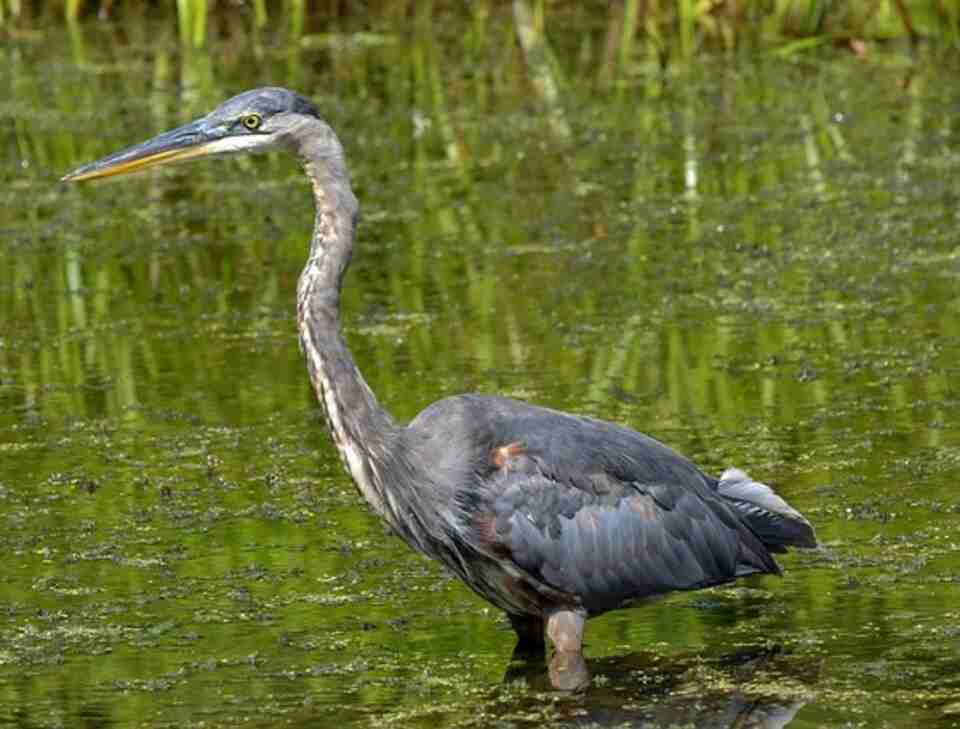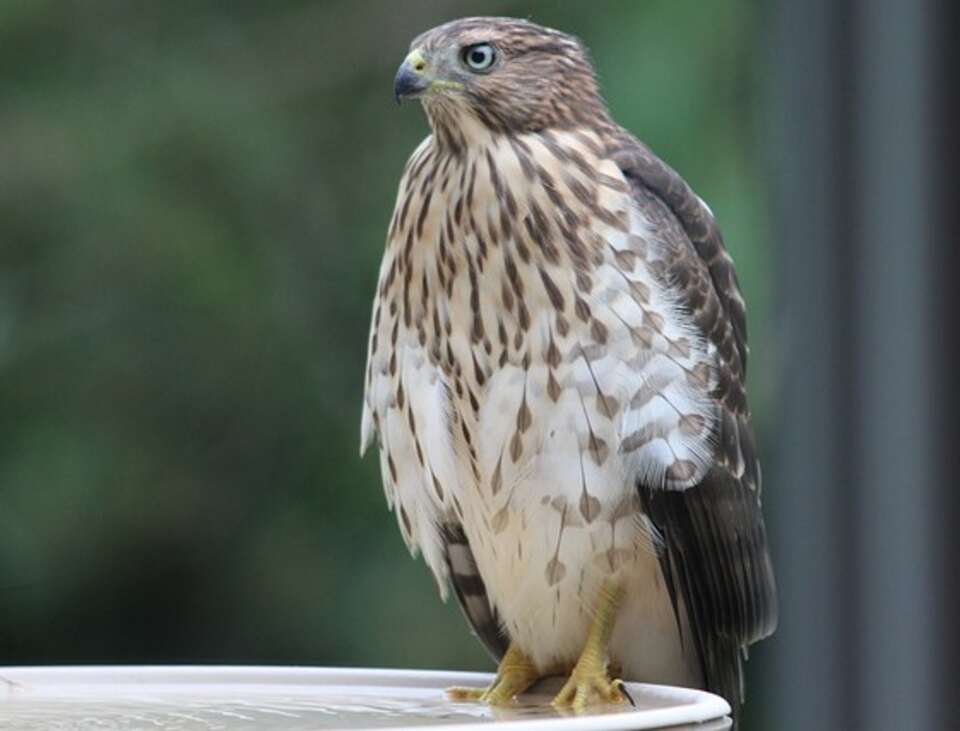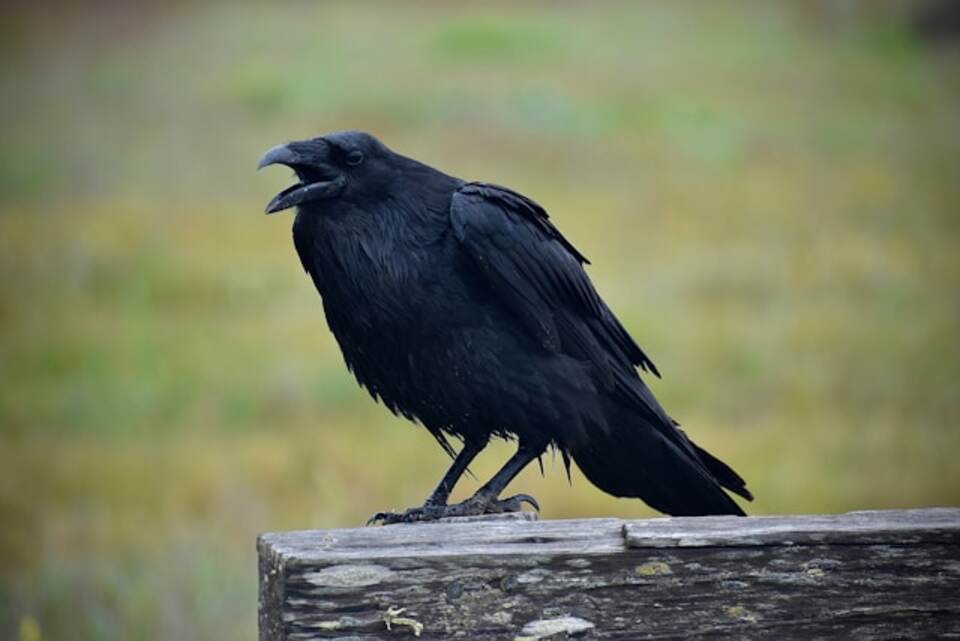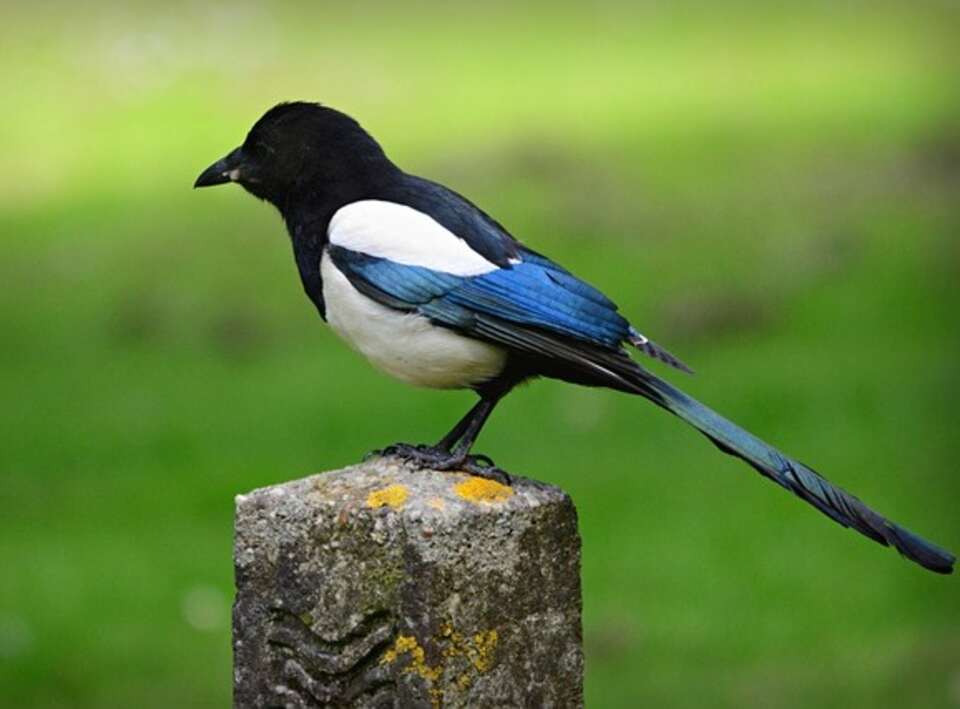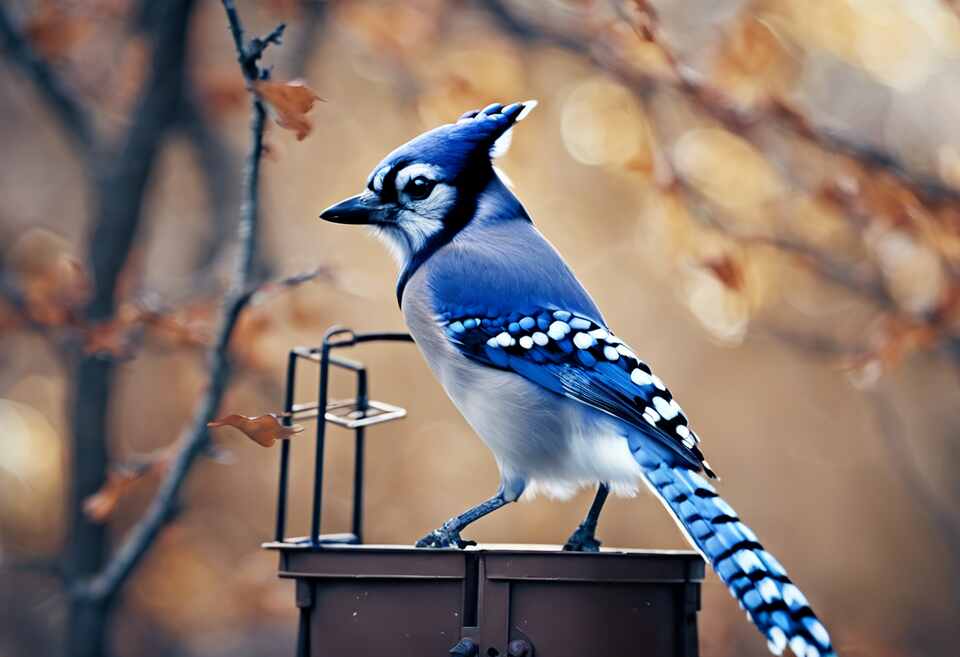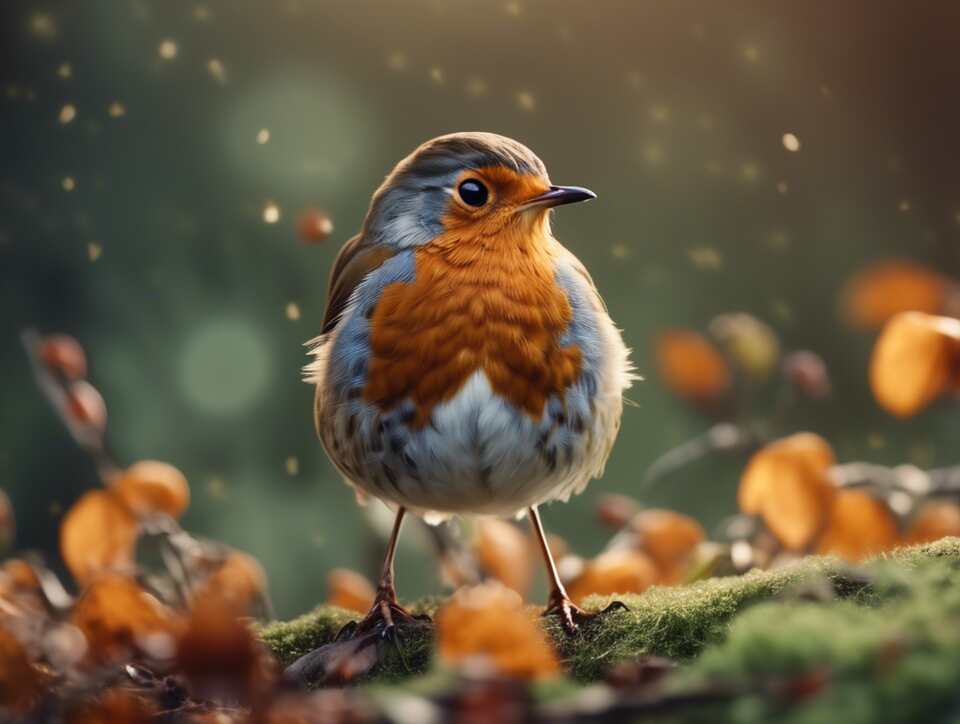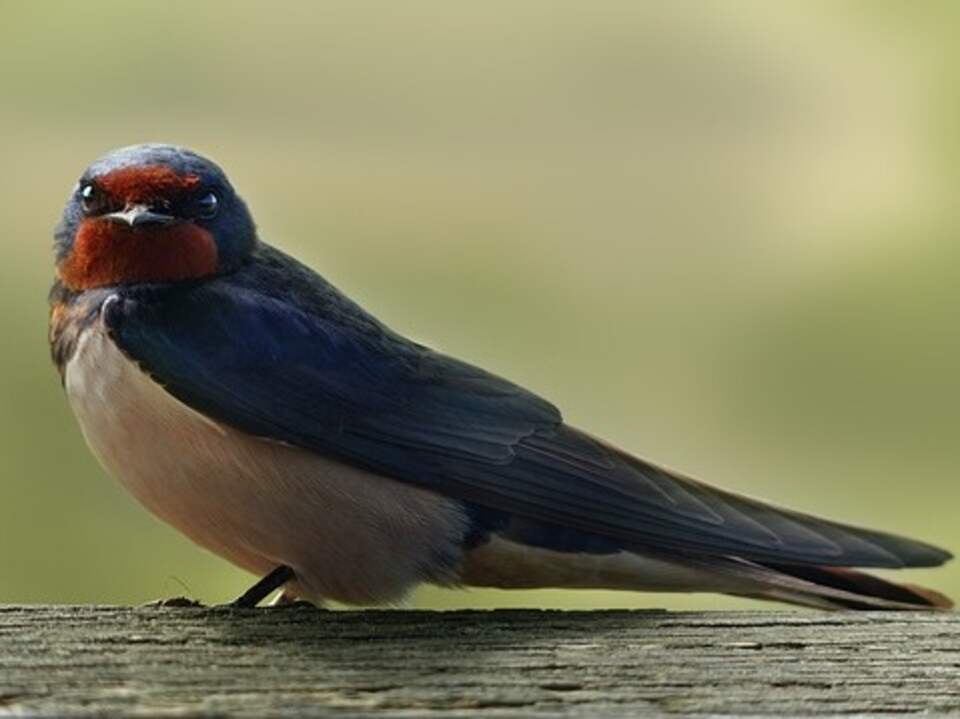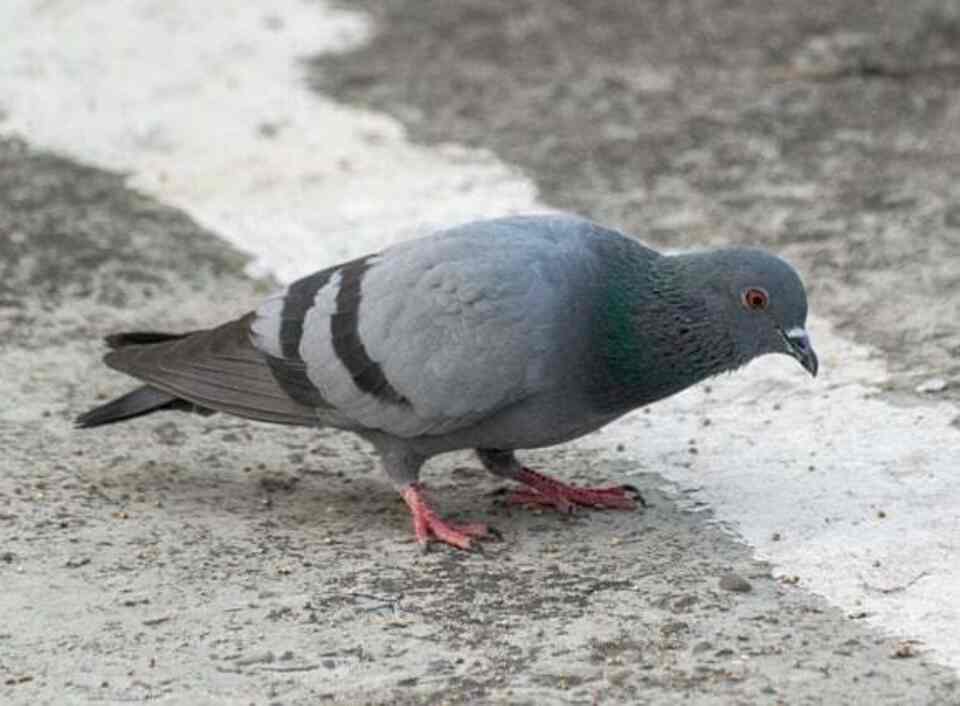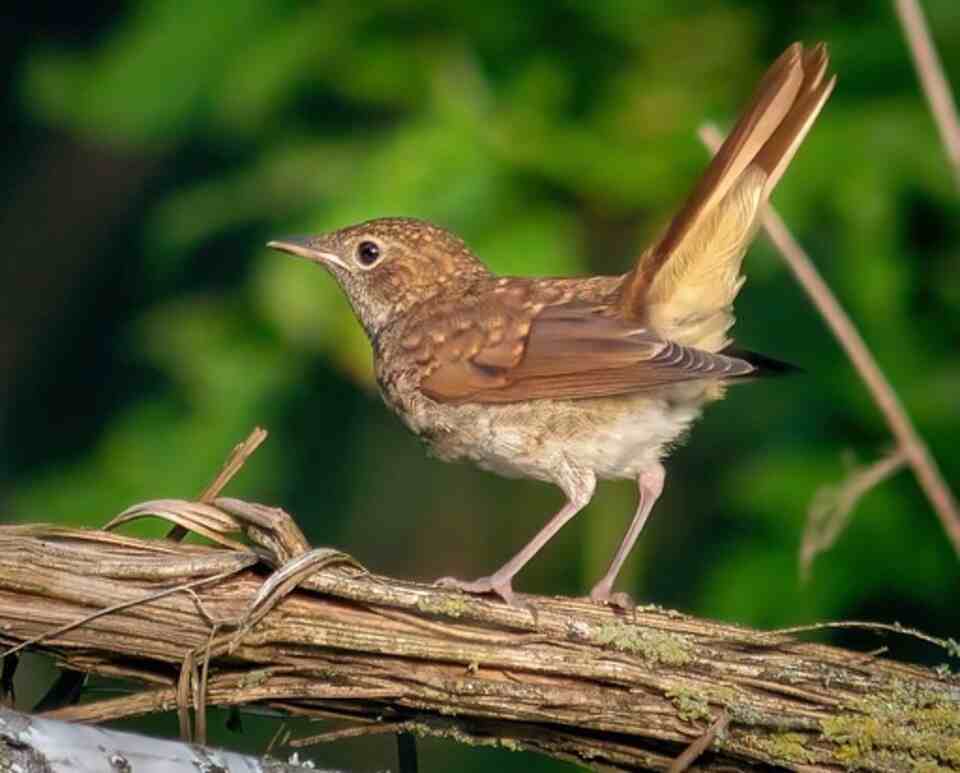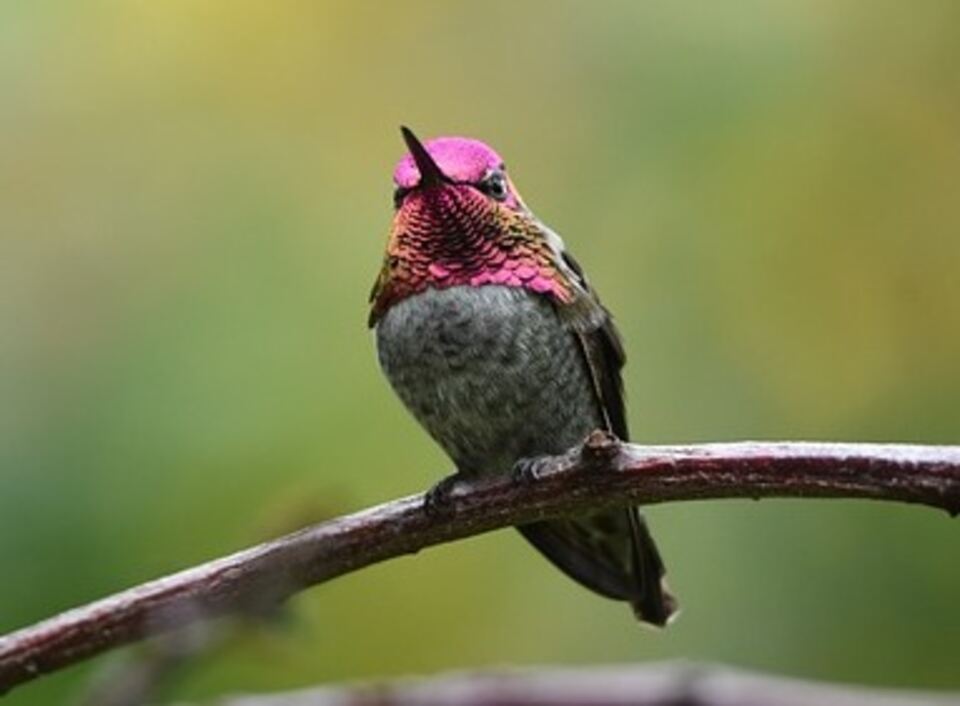Birds are renowned for their exceptional visual abilities, with many species possessing eyesight that far surpasses that of humans and other animals. This comprehensive guide delves into the fascinating world of avian vision, ranking 30 birds based on their eyesight capabilities and exploring how they compare to one another.
Whether you’re an ornithology enthusiast, a wildlife photographer, or simply curious about the natural world, this in-depth exploration will provide you with valuable insights into the remarkable visual adaptations of our feathered friends.
Table of Contents
- 1 Understanding Avian Vision
- 2 The Top 30 Birds Ranked by Eyesight
- 2.1 1. Wedge-tailed Eagle (Aquila audax)
- 2.2 2. Golden Eagle (Aquila chrysaetos)
- 2.3 3. Peregrine Falcon (Falco peregrinus)
- 2.4 4. Bald Eagle (Haliaeetus leucocephalus)
- 2.5 5. Osprey (Pandion haliaetus)
- 2.6 6. Harris’s Hawk (Parabuteo unicinctus)
- 2.7 7. Red-tailed Hawk (Buteo jamaicensis)
- 2.8 8. Eurasian Eagle-Owl (Bubo bubo)
- 2.9 9. Great Horned Owl (Bubo virginianus)
- 2.10 10. Barn Owl (Tyto alba)
- 2.11 11. Northern Goshawk (Accipiter gentilis)
- 2.12 12. Common Kingfisher (Alcedo atthis)
- 2.13 13. Turkey Vulture (Cathartes aura)
- 2.14 14. Arctic Tern (Sterna paradisaea)
- 2.15 15. American Kestrel (Falco sparverius)
- 2.16 16. Snowy Owl (Bubo scandiacus)
- 2.17 17. Great Blue Heron (Ardea herodias)
- 2.18 18. Cooper’s Hawk (Accipiter cooperii)
- 2.19 19. Common Raven (Corvus corax)
- 2.20 20. Eurasian Magpie (Pica pica)
- 2.21 21. Northern Cardinal (Cardinalis cardinalis)
- 2.22 22. Blue Jay (Cyanocitta cristata)
- 2.23 23. European Robin (Erithacus rubecula)
- 2.24 24. Barn Swallow (Hirundo rustica)
- 2.25 25. House Sparrow (Passer domesticus)
- 2.26 26. European Starling (Sturnus vulgaris)
- 2.27 27. Rock Pigeon (Columba livia)
- 2.28 28. Common Nightingale (Luscinia megarhynchos)
- 2.29 29. Western Meadowlark (Sturnella neglecta)
- 2.30 30. Ruby-throated Hummingbird (Archilochus colubris)
- 3 Conclusion
- 4 Author
Understanding Avian Vision
Before we dive into our ranking, it’s essential to understand what makes bird vision so unique. Birds have several adaptations that contribute to their superior eyesight:
- Large eyes relative to body size: Many birds have eyes that are proportionally larger than those of other animals, allowing for more light to enter and creating a larger, clearer image.
- Tetrachromatic vision: While humans have three types of cone cells in their retinas (trichromatic vision), most birds have four (tetrachromatic vision). This fourth cone allows them to see a broader spectrum of colors, including ultraviolet light.
- High density of photoreceptors: Birds’ retinas contain a higher density of photoreceptors (rods and cones) than human retinas, resulting in sharper, more detailed vision.
- Rapid image processing: Birds can process visual information much faster than humans, allowing them to detect movement more quickly and accurately.
- Wide field of view: Many birds have eyes positioned on the sides of their heads, providing a wide field of view that helps them detect predators and prey.
Now that we have a foundation for understanding avian vision, let’s explore our ranking of 30 birds based on their eyesight capabilities.
The Top 30 Birds Ranked by Eyesight
1. Wedge-tailed Eagle (Aquila audax)
Eyesight Ranking: 10/10
The Wedge-tailed Eagle, native to Australia, takes the top spot in our ranking due to its exceptional visual acuity. These majestic raptors possess eyesight that is up to 8 times sharper than that of humans.
Key features of Wedge-tailed Eagle vision:
- Can spot prey from over 3 kilometers away
- Large eyes with a high concentration of cone cells
- Excellent ability to detect movement, even from great distances
Hunting behavior: Wedge-tailed Eagles use their superior eyesight to locate prey from high altitudes. They can spot small mammals, reptiles, and other birds from incredible distances, allowing them to plan their hunting strategy before swooping down for the kill.
Comparison to human vision: If a human and a Wedge-tailed Eagle were standing side by side, the eagle would be able to see an ant crawling on the ground from the roof of a 10-story building, while the human would struggle to see it even from ground level.
2. Golden Eagle (Aquila chrysaetos)
Eyesight Ranking: 9.9/10
The Golden Eagle, found across the Northern Hemisphere, is renowned for its impressive eyesight, which plays a crucial role in its hunting success.
Key features of Golden Eagle vision:
- Retinal fovea with up to 1 million cones per square millimeter
- Ability to see ultraviolet light, aiding in prey detection
- Can spot a rabbit up to 3.2 kilometers away
Hunting behavior: Golden Eagles use their exceptional vision to locate prey from high in the sky or while perched on elevated vantage points. Their ability to see ultraviolet light helps them detect urine trails left by small mammals, making tracking prey easier.
Comparison to human vision: A Golden Eagle’s eyesight is estimated to be 4-8 times sharper than that of a human with 20/20 vision. This means they can see details from a distance that would appear blurry or indistinct to human eyes.
3. Peregrine Falcon (Falco peregrinus)
Eyesight Ranking: 9.8/10
The Peregrine Falcon, known as the fastest animal on Earth, relies heavily on its incredible eyesight to achieve its record-breaking hunting dives.
Key features of Peregrine Falcon vision:
- Highly developed fovea with up to 65,000 photoreceptors per square millimeter
- Ability to track fast-moving prey with precision
- Can spot a pigeon from over 8 kilometers away
Hunting behavior: Peregrine Falcons use their exceptional vision to locate prey from great heights. Once a target is spotted, they enter a high-speed dive (stoop) that can reach speeds over 300 km/h. Their visual acuity allows them to make split-second adjustments during the dive to intercept their prey accurately.
Comparison to human vision: If a human had the visual acuity of a Peregrine Falcon, they would be able to read a newspaper headline from a distance of 1.6 kilometers.
4. Bald Eagle (Haliaeetus leucocephalus)
Eyesight Ranking: 9.7/10
The Bald Eagle, the national bird of the United States, possesses some of the sharpest eyes in the animal kingdom.
Key features of Bald Eagle vision:
- Eyes that are nearly as large as human eyes, despite a much smaller head size
- Ability to see both forward and to the side simultaneously
- Can spot fish underwater from hundreds of feet in the air
Hunting behavior: Bald Eagles primarily hunt fish, using their exceptional eyesight to locate prey from high perches or while soaring. They can spot fish swimming near the water’s surface and make precise calculations to snatch them with their talons.
Comparison to human vision: A Bald Eagle’s eyesight is estimated to be 4-5 times sharper than that of a human with perfect vision. They can see fish underwater from heights where the fish would be completely invisible to human eyes.
5. Osprey (Pandion haliaetus)
Eyesight Ranking: 9.6/10
The Osprey, also known as the sea hawk or fish eagle, has specialized vision adaptations for its fish-based diet.
Key features of Osprey vision:
- Polarized vision that helps reduce glare from water surfaces
- Ability to adjust focus rapidly when diving into water
- Can spot fish from 30-40 meters above the water
Hunting behavior: Ospreys hover over bodies of water, using their polarized vision to peer through the surface and locate fish. Once a target is spotted, they dive feet-first into the water, relying on their sharp vision to make last-second adjustments for a successful catch.
Comparison to human vision: An Osprey’s ability to spot fish through water glare is far superior to that of humans. While we might struggle to see anything below the surface of a shimmering lake, an Osprey can easily detect and track fish swimming beneath.
6. Harris’s Hawk (Parabuteo unicinctus)
Eyesight Ranking: 9.5/10
Harris’s Hawks are known for their unique social hunting behavior and their impressive visual capabilities.
Key features of Harris’s Hawk vision:
- Large eyes with a high concentration of rod cells for excellent low-light vision
- Sharp binocular vision for accurate depth perception
- Can spot small prey from over a kilometer away
Hunting behavior: Harris’s Hawks often hunt in groups, using their keen eyesight to coordinate attacks on prey. Their excellent low-light vision allows them to hunt effectively during dawn and dusk when many of their prey species are active.
Comparison to human vision: The low-light capabilities of a Harris’s Hawk far exceed those of humans. In conditions where a human might struggle to see their hand in front of their face, a Harris’s Hawk can still spot and track small moving prey.
7. Red-tailed Hawk (Buteo jamaicensis)
Eyesight Ranking: 9.4/10
The Red-tailed Hawk, one of the most common hawks in North America, relies on its sharp vision for hunting success.
Key features of Red-tailed Hawk vision:
- Eyes that are proportionately much larger than human eyes
- Ability to see a wider range of colors than humans, including ultraviolet
- Can spot a mouse from about 30 meters up in the air
Hunting behavior: Red-tailed Hawks often perch on high vantage points, using their excellent vision to scan the ground for prey. When hunting, they can spot small mammals, birds, and reptiles from great distances before swooping down to capture them.
Comparison to human vision: A Red-tailed Hawk’s color perception is superior to that of humans. They can see colors in the ultraviolet spectrum, which aids in tracking prey by detecting urine trails that are invisible to human eyes.
8. Eurasian Eagle-Owl (Bubo bubo)
Eyesight Ranking: 9.3/10
The Eurasian Eagle-Owl, one of the largest owl species, combines exceptional night vision with sharp daytime sight.
Key features of Eurasian Eagle-Owl vision:
- Extremely large eyes optimized for low-light conditions
- Ability to move eyes independently, providing a wide field of view
- Excellent depth perception for accurate hunting in three-dimensional space
Hunting behavior: Eurasian Eagle-Owls are primarily nocturnal hunters, using their superior night vision to locate prey in near-total darkness. Their large eyes gather available light effectively, allowing them to spot movement and distinguish shapes even on moonless nights.
Comparison to human vision: In low-light conditions where a human might only see vague shadows, a Eurasian Eagle-Owl can detect detailed shapes and movements, giving it a significant advantage in nocturnal hunting.
9. Great Horned Owl (Bubo virginianus)
Eyesight Ranking: 9.1/10
The Great Horned Owl, native to the Americas, combines excellent night vision with sharp daytime sight, making it a formidable predator around the clock.
Key features of Great Horned Owl vision:
- Eyes that are almost as large as human eyes, despite a much smaller body size
- Extremely sensitive rod cells for superior night vision
- Wide field of view with significant binocular overlap for depth perception
Hunting behavior: Great Horned Owls are primarily nocturnal hunters but can also be active during twilight hours. Their large eyes and high concentration of rod cells allow them to detect even the slightest movements in near-total darkness.
Comparison to human vision: In terms of light sensitivity, a Great Horned Owl’s eyes are estimated to be 100 times more sensitive than human eyes. This means they can effectively hunt in light conditions that would render a human virtually blind.
Now that we’ve covered the top 10 birds in our eyesight ranking, let’s continue with the next 20 birds, exploring their unique visual adaptations and how they compare to both humans and other birds on our list.
10. Barn Owl (Tyto alba)
Eyesight Ranking: 9.0/10
The Barn Owl, found on every continent except Antarctica, is renowned for its extraordinary night vision and unique facial disc that enhances its hearing capabilities.
Key features of Barn Owl vision:
- Extremely large eyes relative to body size, optimized for low-light conditions
- Limited eye movement, compensated by the ability to rotate their head up to 270 degrees
- Excellent depth perception due to forward-facing eyes
Hunting behavior: Barn Owls rely primarily on their acute hearing to locate prey, but their exceptional night vision plays a crucial role in the final stages of the hunt. They can navigate and capture prey in near-total darkness, using their vision to avoid obstacles and make precise strikes.
Comparison to other birds: While the Barn Owl’s night vision is superior to many diurnal birds, it falls slightly short of the Eurasian Eagle-Owl in overall visual acuity. However, its combination of hearing and vision makes it one of the most effective nocturnal hunters.
11. Northern Goshawk (Accipiter gentilis)
Eyesight Ranking: 8.9/10
The Northern Goshawk, a powerful forest-dwelling raptor, has keen eyesight adapted for hunting in densely wooded areas.
Key features of Northern Goshawk vision:
- Large eyes with a high density of photoreceptors
- Excellent motion detection capabilities
- Sharp focus at varying distances, crucial for navigating through forest canopies
Hunting behavior: Northern Goshawks use their acute vision to detect prey movement through gaps in foliage. Their ability to maintain focus while flying at high speeds through forests allows them to pursue and capture agile prey like squirrels and birds.
Comparison to other birds: While the Northern Goshawk’s eyesight may not match the long-distance acuity of eagles, its specialized forest-adapted vision gives it an edge in wooded environments where other raptors might struggle.
12. Common Kingfisher (Alcedo atthis)
Eyesight Ranking: 8.8/10
The Common Kingfisher, known for its vibrant plumage and fish-catching prowess, has specialized vision adapted for hunting in and around water.
Key features of Common Kingfisher vision:
- Ability to compensate for light refraction when looking into water
- Oil droplets in the retina that enhance color perception
- Binocular vision for accurate depth perception when diving
Hunting behavior: Kingfishers perch near water bodies, using their sharp vision to spot fish swimming below the surface. Their eyes can adjust for the refraction of light at the water’s surface, allowing them to accurately judge the position of their prey before diving.
Comparison to other birds: While the Kingfisher’s overall visual acuity may not match that of larger raptors, its specialized adaptations for seeing into water give it a unique advantage in its specific hunting niche.
13. Turkey Vulture (Cathartes aura)
Eyesight Ranking: 8.7/10
The Turkey Vulture, widespread across the Americas, combines keen eyesight with an acute sense of smell to locate carrion.
Key features of Turkey Vulture vision:
- Large eyes with a wide field of view
- Ability to detect ultraviolet light, which may aid in locating decomposing flesh
- Excellent visual acuity for spotting potential food sources from great heights
Foraging behavior: Turkey Vultures soar at high altitudes, using both their eyesight and sense of smell to locate carrion. Their ability to see ultraviolet light may help them spot the breakdown of animal tissues, which can reflect UV light differently than surrounding vegetation.
Comparison to other birds: While the Turkey Vulture’s eyesight is impressive, it relies more heavily on its sense of smell compared to other birds in our ranking. However, its visual abilities still play a crucial role in its scavenging success.
14. Arctic Tern (Sterna paradisaea)
Eyesight Ranking: 8.6/10
The Arctic Tern, known for its record-breaking long-distance migrations, has excellent vision adapted for both marine and terrestrial environments.
Key features of Arctic Tern vision:
- Eyes adapted for seeing clearly in both air and water
- Ability to detect polarized light, aiding in navigation
- Sharp visual acuity for spotting small fish from above the water’s surface
Foraging and navigation: Arctic Terns use their keen eyesight to spot small fish and plankton near the water’s surface. Their ability to detect polarized light may also play a crucial role in their remarkable navigation abilities during long-distance migrations.
Comparison to other birds: While the Arctic Tern’s visual acuity may not match that of specialized raptors, its adaptations for seeing in both air and water, combined with its polarized light detection, make it uniquely suited for its migratory lifestyle.
15. American Kestrel (Falco sparverius)
Eyesight Ranking: 8.5/10
The American Kestrel, North America’s smallest falcon, possesses vision that belies its diminutive size.
Key features of American Kestrel vision:
- Ability to see in the ultraviolet spectrum
- Excellent motion detection capabilities
- Sharp focus at varying distances
Hunting behavior: American Kestrels often hunt from perches or by hovering, using their keen eyesight to spot small prey like insects and rodents. Their ability to see ultraviolet light allows them to track urine trails left by small mammals, giving them an edge in locating potential prey.
Comparison to other birds: While not as powerful as larger raptors, the American Kestrel’s eyesight is remarkably acute for its size, allowing it to be an efficient predator despite its small stature.
16. Snowy Owl (Bubo scandiacus)
Eyesight Ranking: 8.4/10
The Snowy Owl, adapted for life in the Arctic, combines excellent daytime and nighttime vision.
Key features of Snowy Owl vision:
- Large eyes with a high concentration of rod cells for low-light vision
- Yellow irises that may help filter out bright light reflected from snow
- Wide field of view with significant binocular overlap
Hunting behavior: Unlike many owl species, Snowy Owls are often active during the day, especially during the long daylight hours of Arctic summers. Their vision is well-adapted for spotting prey against snow, and they can detect movement from great distances.
Comparison to other birds: While the Snowy Owl’s eyesight may not be as specialized for night vision as some other owl species, its ability to hunt effectively in both bright and low-light conditions makes it a versatile predator.
ailed Hawk’s vision is well-rounded, allowing it to be a successful generalist predator in a variety of habitats.
17. Great Blue Heron (Ardea herodias)
Eyesight Ranking: 8.1/10
The Great Blue Heron, a large wading bird found across much of North America, has vision well-adapted for hunting in shallow waters.
Key features of Great Blue Heron vision:
- Binocular vision for accurate depth perception
- Yellow iris that may help reduce glare from water surfaces
- Ability to see well in both bright daylight and low-light conditions
Hunting behavior: Great Blue Herons often stand motionless in shallow water, using their sharp eyesight to detect the movement of fish, amphibians, and other aquatic prey. Their excellent depth perception allows them to strike with precision, even when their prey is partially obscured by water.
Comparison to other birds: While the Great Blue Heron’s vision may not match the long-distance acuity of some raptors, its specialized adaptations for hunting in aquatic environments make it a highly successful predator in its niche.
18. Cooper’s Hawk (Accipiter cooperii)
Eyesight Ranking: 8.0/10
The Cooper’s Hawk, a medium-sized woodland raptor, possesses keen eyesight adapted for hunting in forested areas.
Key features of Cooper’s Hawk vision:
- Large eyes relative to head size
- Excellent motion detection capabilities
- Sharp focus at varying distances, crucial for navigating through trees
Hunting behavior: Cooper’s Hawks are agile forest predators, often pursuing other birds through dense vegetation. Their acute vision allows them to detect and track fast-moving prey while maneuvering through complex forest environments.
Comparison to other birds: While the Cooper’s Hawk’s eyesight may not match the long-distance acuity of open-country raptors, its specialized adaptations for forest hunting make it remarkably effective in its woodland habitat.
19. Common Raven (Corvus corax)
Eyesight Ranking: 7.9/10
The Common Raven, known for its intelligence and adaptability, also possesses impressive visual capabilities.
Key features of Common Raven vision:
- Relatively large eyes with a high density of cone cells
- Excellent color vision, possibly extending into the ultraviolet spectrum
- Good visual acuity for both near and distant objects
Foraging behavior: Ravens use their keen eyesight in various foraging strategies, from spotting carrion at great distances to detecting subtle environmental cues that may lead to food sources. Their visual acuity also plays a role in their complex social behaviors and problem-solving abilities.
Comparison to other birds: While ravens may not match the specialized vision of raptors, their overall visual capabilities are impressive, especially when combined with their renowned cognitive abilities.
20. Eurasian Magpie (Pica pica)
Eyesight Ranking: 7.8/10
The Eurasian Magpie, another intelligent member of the corvid family, has sharp vision that complements its cunning nature.
Key features of Eurasian Magpie vision:
- Eyes adapted for both near and far vision
- Good color perception, aiding in food identification
- Ability to recognize individual human faces
Foraging and social behavior: Magpies use their keen eyesight for various tasks, from finding small food items to recognizing potential threats or allies. Their ability to distinguish individual human faces demonstrates the sophistication of their visual processing.
Comparison to other birds: While not specialized for hunting like raptors, the Eurasian Magpie’s vision is well-suited for its omnivorous and socially complex lifestyle.
21. Northern Cardinal (Cardinalis cardinalis)
Eyesight Ranking: 7.7/10
The Northern Cardinal, a popular backyard bird in North America, has vision well-adapted for its forest edge habitat.
Key features of Northern Cardinal vision:
- Eyes positioned to provide a wide field of view
- Good color perception, important for identifying ripe fruits and seeds
- Ability to see well in low-light conditions of dawn and dusk
Foraging behavior: Northern Cardinals use their vision to locate a variety of food sources, from seeds and fruits to insects. Their ability to see well in low light allows them to be active in the early morning and late evening when many other songbirds are not.
Comparison to other birds: While not as acute as that of predatory birds, the Northern Cardinal’s vision is well-suited for its generalist feeding habits and helps it avoid predators in its open woodland habitats.
22. Blue Jay (Cyanocitta cristata)
Eyesight Ranking: 7.6/10
The Blue Jay, known for its intelligence and vocal mimicry, also possesses sharp vision that aids in its varied lifestyle.
Key features of Blue Jay vision:
- Good color perception, including sensitivity to blue hues
- Ability to detect movement at a distance
- Sharp near vision for manipulating food items
Foraging and social behavior: Blue Jays use their keen eyesight to locate food, from acorns and berries to small invertebrates. Their visual acuity also plays a role in their complex social interactions and in detecting potential predators.
Comparison to other birds: While not specialized for hunting like raptors, the Blue Jay’s vision is versatile, supporting its omnivorous diet and its role as a sentinel species in mixed-species flocks.
23. European Robin (Erithacus rubecula)
Eyesight Ranking: 7.5/10
The European Robin, a familiar garden bird in Europe, has vision adapted for its ground-foraging lifestyle.
Key features of European Robin vision:
- Large eyes relative to head size
- Good color vision, aiding in food identification
- Ability to see well in the low light conditions of dawn and dusk
Foraging behavior: European Robins primarily forage on the ground, using their sharp eyesight to detect movement of small invertebrates in leaf litter. Their vision also helps them spot potential predators and navigate through their woodland edge habitats.
Comparison to other birds: While not as specialized as that of raptors, the European Robin’s vision is well-suited for its ecological niche, allowing it to be an efficient insectivore and navigate its complex habitat.
24. Barn Swallow (Hirundo rustica)
Eyesight Ranking: 7.4/10
The Barn Swallow, known for its agile flight and aerial insect-catching, has vision adapted for its high-speed lifestyle.
Key features of Barn Swallow vision:
- Excellent motion detection capabilities
- Wide field of view
- Good visual acuity even at high speeds
Foraging behavior: Barn Swallows catch insects on the wing, requiring exceptional visual tracking abilities. Their eyes can process visual information quickly, allowing them to make split-second adjustments in flight to intercept fast-moving prey.
Comparison to other birds: While the Barn Swallow’s static visual acuity may not match that of some perching birds, its ability to process visual information at high speeds makes it remarkably adept at its specialized foraging niche.
25. House Sparrow (Passer domesticus)
Eyesight Ranking: 7.3/10
The House Sparrow, one of the most widespread bird species globally, has vision well-suited for its adaptable, human-associated lifestyle.
Key features of House Sparrow vision:
- Good all-round vision with a wide field of view
- Ability to see well in varying light conditions
- Decent color perception for identifying food sources
Foraging behavior: House Sparrows are opportunistic feeders, using their vision to locate a variety of food sources in urban and rural environments. Their eyesight helps them navigate complex human-made structures and detect potential predators.
Comparison to other birds: While not as specialized as some other species, the House Sparrow’s vision is versatile, contributing to its success in a wide range of habitats and its ability to coexist closely with humans.
26. European Starling (Sturnus vulgaris)
Eyesight Ranking: 7.2/10
The European Starling, known for its iridescent plumage and complex vocalizations, has vision adapted for its varied foraging strategies.
Key features of European Starling vision:
- Eyes positioned for a good balance of binocular and peripheral vision
- Ability to see well in varying light conditions
- Good color perception, possibly extending into the ultraviolet spectrum
Foraging behavior: Starlings use their vision for both ground foraging and aerial insect-catching. Their visual capabilities allow them to detect movement of invertebrates in grass and to track flying insects against complex backgrounds.
Comparison to other birds: While not as specialized as some predatory or nectar-feeding birds, the European Starling’s vision is well-rounded, supporting its adaptable lifestyle and diverse feeding habits.
27. Rock Pigeon (Columba livia)
Eyesight Ranking: 7.1/10
The Rock Pigeon, commonly seen in urban environments worldwide, has vision adapted for its ground-feeding habits and navigation needs.
Key features of Rock Pigeon vision:
- Eyes positioned on the sides of the head, providing a wide field of view
- Ability to detect polarized light, potentially aiding in navigation
- Good color vision, including sensitivity to ultraviolet light
Foraging and navigation: Rock Pigeons use their vision to locate food on the ground and to navigate through complex urban environments. Their ability to detect polarized light may play a role in their renowned homing abilities.
Comparison to other birds: While the Rock Pigeon’s visual acuity may not match that of predatory birds, its specialized adaptations, particularly for navigation, make it well-suited for its ecological niche and its success in human-modified environments.
28. Common Nightingale (Luscinia megarhynchos)
Eyesight Ranking: 7.0/10
The Common Nightingale, renowned for its beautiful song, also possesses vision adapted for its crepuscular lifestyle and woodland habitat.
Key features of Common Nightingale vision:
- Large eyes relative to head size, enhancing light-gathering ability
- Good low-light vision, suitable for dawn and dusk activity
- Decent color perception, aiding in food identification
Foraging behavior: Common Nightingales primarily forage on the ground or in low vegetation, using their vision to detect movement of insects and other small invertebrates. Their ability to see well in low light conditions allows them to be active during twilight hours when many insects are most active.
Comparison to other birds: While the Common Nightingale’s visual acuity may not match that of diurnal predators, its adapted low-light vision makes it well-suited for its ecological niche as a crepuscular insectivore in woodland environments.
29. Western Meadowlark (Sturnella neglecta)
Eyesight Ranking: 7.0/10
The Western Meadowlark, known for its melodious song and striking yellow plumage, possesses vision well-adapted for its ground-dwelling lifestyle in open grasslands.
Key features of Western Meadowlark vision:
- Eyes positioned on the sides of the head, providing a wide field of view
- Good color perception, aiding in food identification and predator detection
- Ability to see well in bright, open habitats
Foraging behavior: Western Meadowlarks primarily forage on the ground, using their keen eyesight to detect insects, seeds, and small invertebrates in grass and soil. Their wide field of view helps them stay alert to potential predators while foraging.
Comparison to other birds: While the Western Meadowlark’s visual acuity may not match that of specialized predators or some forest-dwelling birds, its vision is well-suited for its open habitat. The combination of good color perception and a wide field of view makes it an effective forager and helps it maintain vigilance in its exposed environment.
30. Ruby-throated Hummingbird (Archilochus colubris)
Eyesight Ranking: 6.9/10
The Ruby-throated Hummingbird, known for its small size and rapid wing beats, possesses vision adapted for its unique lifestyle of nectar feeding and insect catching.
Key features of Ruby-throated Hummingbird vision:
- Large eyes relative to head size, providing good visual acuity
- Excellent color vision, extending into the ultraviolet spectrum
- Ability to process visual information rapidly, crucial for their high-speed flight
Foraging behavior: Ruby-throated Hummingbirds use their keen eyesight to locate and identify flowers for nectar feeding. Their color vision, which extends into the ultraviolet, allows them to see patterns on flowers that are invisible to humans. They also use their vision to spot and catch tiny insects in mid-air, supplementing their diet with protein.
Comparison to other birds: While the Ruby-throated Hummingbird’s overall visual acuity may not match that of raptors, its specialized color vision and ability to process visual information at high speeds make it exceptionally well-adapted for its ecological niche. Their vision plays a crucial role in their precision flying and hovering abilities.
Conclusion
This comprehensive exploration of avian vision reveals the remarkable diversity and specialization of bird eyesight. From the eagle-eyed raptors at the top of our list to the adaptable vision of common urban birds, each species has evolved visual capabilities uniquely suited to its lifestyle and ecological niche.
Key takeaways from our ranking include:
- Raptors dominate: Birds of prey, with their large eyes and high density of photoreceptors, consistently rank at the top for visual acuity.
- Specialization matters: While overall acuity is important, many birds have specialized visual adaptations that make them incredibly efficient in their particular niches.
- Vision beyond human perception: Many birds can see in the ultraviolet spectrum or detect polarized light, opening up a visual world beyond human perception.
- Lifestyle influences vision: A bird’s visual capabilities are closely tied to its foraging strategies, habitat, and behavioral patterns.
- Comparative advantage: Even birds lower in the ranking have visual capabilities that far exceed human vision in many aspects.
Understanding the diverse visual abilities of birds not only enhances our appreciation of these remarkable creatures but also provides valuable insights for fields ranging from conservation and bird-friendly urban planning to biomimicry in technology development.
As we continue to study and learn about avian vision, we’re likely to uncover even more fascinating adaptations, further illuminating the complex and beautiful ways birds perceive and interact with their world.

